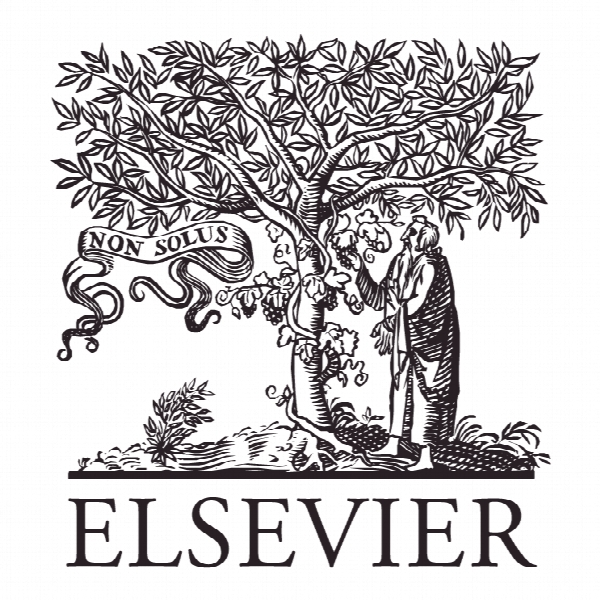تصمیم گیری چند معیاره با شماره فاز شهودی مثلثاتی بر اساس سنجش فاصله و رویکرد انتروپی پارامتری Multi-criteria Decision Making with Triangular Intuitionistic Fuzzy Number based on Distance Measure & Parametric Entropy Approach
- نوع فایل : کتاب
- زبان : انگلیسی
- ناشر : Elsevier
- چاپ و سال / کشور: 2018
توضیحات
رشته های مرتبط مهندسی کامپیوتر، مهندسی صنایع
گرایش های مرتبط الگوریتم ها و محاسبات، برنامه ریزی و تحلیل سیستم ها
مجله پروسه علوم کامپیوتر – Procedia Computer Science
دانشگاه School of Electrical and Computer Science Engineering – Shoolini University – INDIA
منتشر شده در نشریه الزویر
کلمات کلیدی انگلیسی Triangular Intuitionistic Fuzzy Number; Multiple Criteria Decision Making; Ranking; Closeness Coefficient; Distance Measures
گرایش های مرتبط الگوریتم ها و محاسبات، برنامه ریزی و تحلیل سیستم ها
مجله پروسه علوم کامپیوتر – Procedia Computer Science
دانشگاه School of Electrical and Computer Science Engineering – Shoolini University – INDIA
منتشر شده در نشریه الزویر
کلمات کلیدی انگلیسی Triangular Intuitionistic Fuzzy Number; Multiple Criteria Decision Making; Ranking; Closeness Coefficient; Distance Measures
Description
1. Introduction Keeping in mind the end goal to pick a thing, the piece of human practices affected by some interrelating components is a critical factor, in a customer basic decision making process. The outside attributes, for example, price, brand, capability and so forth are additionally emphasized in settling on a decision. Fuzzy set hypothesis, created by Lotfi A. Zadeh [1] has capacity to portray the dubious circumstances, uncertainty, inaccuracy, ambiguity and perception. As an augmentation of the fuzzy set, the idea of intuitionistic Fuzzy Set (IFS), was presented by Atanassov [2, 3] in 1986, can express and process of uncertainty much better than fuzzy sets because of having an additional hesitation parameter inherited. Intuitionistic Fuzzy Set is portrayed by two functions- the degree of membership function (be-longingness or enrollment)/degree of non membership function (nonbelongingness or non-enrollment) of an element of the sets along with hesitation margin and is observed to be more useful in catching the ambiguous, deficient or indeterminate data. 2. Literature Survey and Basic Definitions Gau and Buehrer [4] in 1993, presented the idea of vague set. Grattan-Guinness, K.U. Jahn and R. Sambuc [5, 6, 7] presented the theory of interval valued fuzzy set, which is well known generalization of ordinary fuzzy set. Among various extensions of fuzzy sets such as IFS, Vague Set, Interval-valued Fuzzy Set, Triangular Intuitionistic fuzzy set etc. , IFS are found to be more consistent with human behavior. The theory of uncertainty measure makes IFS useful in many scientific disciplines, such as knowledge discovery, analyzing data, data mining, pattern recognition, logic programming, image segmentation, medical diagnosis, image edge detection and modeling various real life activities like evaluation, negotiation and multi criteria decision making. The idea of multiple criteria decision making (MCDM) provides a systematic quantitative approach for decision making problems and includes a gathering of decision makers, surveying multiple criteria and action where judgement of human beings plays a major role. In the course of recent decades, numerous MCDM techniques have been produced to fathom, numerous real life decision circumstances in the field of open organization, administration science, operation examine, designing, society, financial matters, military research and proficient journals [8, 9, 10]. During the MCDM process, decision makers usually use qualitative measure (market reputation, relationship closeness etc.) and/or quantitative measure (economical) for the assessment and choice of most suitable alternative with respect to each criterion and consider the relative significance of every criterion with regard to overall goal. The priority from a decision maker for a particular criterion has been expressed through phonetic judgment, for example, – ‘excellent’, ‘good’, ‘average’, ‘poor’ and ‘extremely poor’. The idea of Linguistic factors is exceptionally valuable in managing practical circumstance which are excessively mind boggling or not all around characterized, to be reasonably described in conventional quantitative expressions. Shu and Cheng [11] described Triangular Intuitionistic Fuzzy Numbers (TIFNs) which have a more noticeable ability to manage more adequate and versatile information than triangular fuzzy numbers. Next, we present some of the basics IFSs and TIFNs in reference with some arithmetic operations and distance measures, which are well known in literature.


